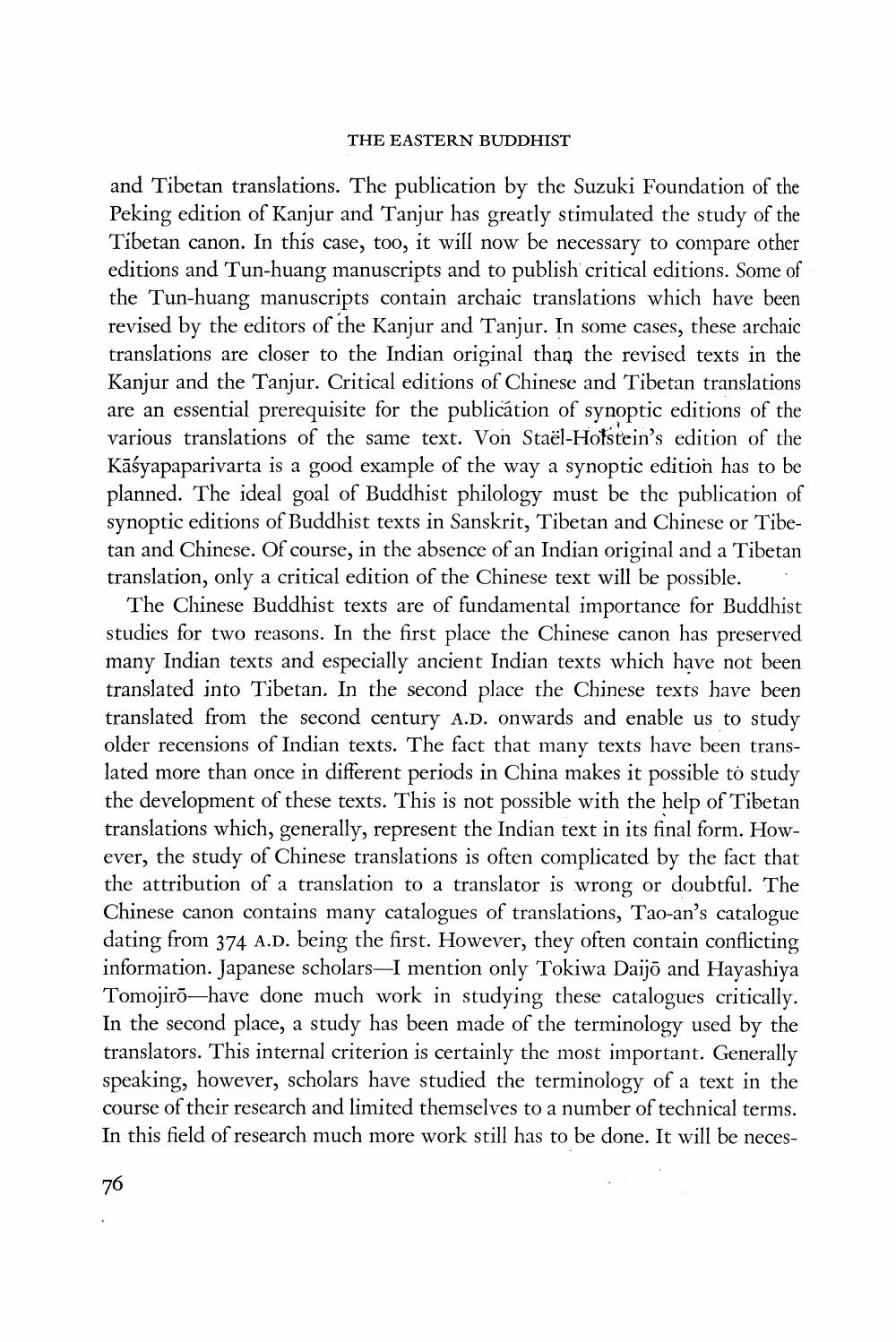________________
THE EASTERN BUDDHIST
and Tibetan translations. The publication by the Suzuki Foundation of the Peking edition of Kanjur and Tanjur has greatly stimulated the study of the Tibetan canon. In this case, too, it will now be necessary to compare other editions and Tun-huang manuscripts and to publish critical editions. Some of the Tun-huang manuscripts contain archaic translations which have been revised by the editors of the Kanjur and Tanjur. In some cases, these archaic translations are closer to the Indian original thaņ the revised texts in the Kanjur and the Tanjur. Critical editions of Chinese and Tibetan translations are an essential prerequisite for the publication of synoptic editions of the various translations of the same text. Von Staël-Hofstein's edition of the Kāśyapaparivarta is a good example of the way a synoptic edition has to be planned. The ideal goal of Buddhist philology must be the publication of synoptic editions of Buddhist texts in Sanskrit, Tibetan and Chinese or Tibetan and Chinese. Of course, in the absence of an Indian original and a Tibetan translation, only a critical edition of the Chinese text will be possible.
The Chinese Buddhist texts are of fundamental importance for Buddhist studies for two reasons. In the first place the Chinese canon has preserved many Indian texts and especially ancient Indian texts which have not been translated into Tibetan. In the second place the Chinese texts have been translated from the second century A.D. onwards and enable us to study older recensions of Indian texts. The fact that many texts have been translated more than once in different periods in China makes it possible to study the development of these texts. This is not possible with the help of translations which, generally, represent the Indian text in its final form. However, the study of Chinese translations is often complicated by the fact that the attribution of a translation to a translator is wrong or doubtful. The Chinese canon contains many catalogues of translations, Tao-an’s catalogue dating from 374 A.D. being the first. However, they often contain conflicting information. Japanese scholars—I mention only Tokiwa Daijō and Hayashiya Tomojiro—have done much work in studying these catalogues critically. In the second place, a study has been made of the terminology used by the translators. This internal criterion is certainly the most important. Generally speaking, however, scholars have studied the terminology of a text in the course of their research and limited themselves to a number of technical terms. In this field of research much more work still has to be done. It will be neces
76




